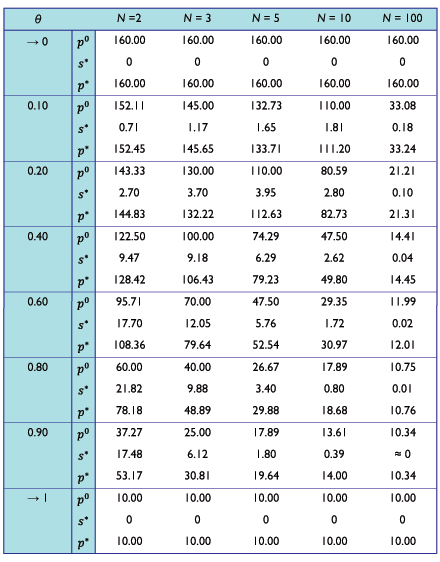Can a company improve its bottom line by pricing its products incorrectly? The answer is yes, in certain cases, according to recent research conducted by Kellogg professors Nabil Al-Najjar, Sandeep Baliga, and David Besanko.
The research, just published in the RAND Journal of Economics, examines one of the most widespread pricing errors: namely, the inclusion of fixed and sunk costs in a company’s calculations for making pricing decisions. “Economic theory offers the unambiguous prescription that only marginal cost is relevant for profit-maximizing pricing decisions,” emphasize the authors. However, they note that in reality, many companies, through naiveté or perhaps sheer optimism, ignore this principle and confound fixed costs (expenses that do not vary, regardless of production or sales levels), sunk costs (expenses that have been incurred and cannot be recovered to a significant degree), and variable costs (those that increase directly in proportion to the level of sales) when making their pricing decisions. Although laws of supply and demand are persuasive teachers and such irrational pricing typically corrects over time, the researchers sought to explain why the full-cost pricing fallacy continues to be perpetuated, even in numerous accounting textbooks. Their results demonstrate that an exception to the rule does in fact exist, and full-cost pricing can be beneficial in limited market conditions.
Modeling Manager Pricing Decisions
By modeling numerous marketplace scenarios in which more simplistic pricing strategies are employed, Al-Najjar, Baliga, and Besanko were able to determine how these strategies would play out over time and affect the profitability of the companies using them. In particular, the authors show that in a differentiated product oligopoly, firms will learn over time to confound variable, fixed, and sunk costs, because marketplace experiences will reinforce the practice through higher true profits. Examples of such oligopolies—that is, difficult-to-enter markets in which a small number of firms produce similar but not identical products—include the cereal and the global automobile industries.
By taking sunk costs into account, firms predispose themselves to set higher prices.Experimental research supports the conclusion that managers often confuse sunk, fixed, and variable costs. For example, in a 2006 study by Offerman and Potters, subjects were asked to play an equilibrium pricing game. The players were divided into two groups: those who paid a sunk entry fee to play the game and those who paid no such fee but faced an identical set of variable costs. Theoretically, the equilibrium prices reached during each game should have been identical. But in practice, the equilibrium price reached in the game in which players paid the entry fee was significantly higher than the price reached in the counterpart game with no such fee.
Accounting for the Learning Curve
According to Al-Najjar, Baliga, and Besanko, however, such studies fall short of addressing the question of whether managers learn to price their products correctly by observing the dynamics of their own marketplaces, even if the foundations for their pricing strategies are theoretically incorrect. To address this question, they built a model that assumes managers make pricing decisions based on their firm’s budgeting assumptions and costing methodologies, both of which may or may not include sunk, fixed, and variable costs. The model also assumes that each firm has imperfect knowledge regarding the budgeting assumptions and costing methodologies of rival firms, including whether or not their cost bases are inflated and when (or even if) they make adjustments to their practices.
The model shows two things. First, it indicates the obvious: each manager learns over time to choose as high of a price as possible within the limits of his knowledge and assumptions, regardless of the market in which he operates. The second conclusion is more surprising: the model indicates the impact that different market scenarios have on equilibrium prices. For instance, in monopoly markets, the confusion of variable, fixed, and sunk costs does not lead to a higher equilibrium price for the simple reason that the monopolist will learn by trial and error what his most profitable price is. Errors in costing methodologies do not lead to higher equilibrium prices in perfectly competitive markets either, since firms have no pricing power in such markets. If a manager were to inflate the cost basis for his firm, he would simply move the company away from making its profit-maximizing quantity. Thus, experience in such a market should eradicate the misunderstanding of cost allocation.
Similarly, homogeneous product oligopolies do not support the distortion of costs or prices. When the products of rival firms are interchangeable, customers should be indifferent to where they purchase the products—the decision is based exclusively on price. Therefore, pressure for a firm to lower its prices, undercut its rivals, and capture its entire market is strong enough to clarify any confusion regarding correct costing over time.
Higher Profits Can Encourage Confounding Costs
In examining differentiated-product oligopolies, however, the authors discovered evidence supporting the sunk-cost fallacy. Managers of firms in such markets are incentivized indirectly through higher profits to confound variable, fixed, and sunk costs. The intuition for this result is that in a differentiated-product oligopoly, if a firm raises its prices, its rivals increase theirs as well, resulting in a more profitable industry equilibrium. By taking sunk costs into account, firms predispose themselves to set higher prices. The resulting increase in profits reinforces this practice, making firms more likely to take fixed and sunk costs into account in the future.
It is important to note that these results hold true only in product oligopolies in which a firm’s price increase causes either an elevation in price or a stabilization of price in its rival firms. For example, if restaurant A raises its prices, restaurant B has no incentive to lower its prices, since the meals offered at A are different enough from those at B that such a cut ought not to drive customers away from A to B. Restaurant B, therefore, might maintain its current prices, or might raise its prices in line with A’s so as not to miss out on the additional profits available to it because of higher prevailing market prices.
The experimental results indicate that both the number of firms present in the oligopoly market and the degree of differentiation for these goods have profound impacts on the likelihood that a firm would benefit from full-cost pricing. Table 1 presents these results, with N being the number of firms in the market; θ being the degree to which products are differentiated; 0 indicating that the goods are completely differentiated and independent; and 1 signifying that the goods are perfect substitutes. P0 is the equilibrium price in the market given no cost-basis distortions; s* is the cost-basis distortion that persists given the model’s output; and p* is the actual market-equilibrium price suggested by the model. Within the table, s* is the key number: the larger the s*, the greater the increase in the market’s appropriate equilibrium price.
Table 1

Within the table, s* is the key number: the larger the s*, the greater the increase in the market’s appropriate equilibrium price.
As the data shows, for markets in which there are numerous players, cost-basis distortions are minimal. Greater intensity of competition accounts for this result. Additionally, when a market begins to resemble either a monopoly or a perfectly competitive market, cost-basis distortions tend to disappear. In the middle of these ranges, however, cost-basis distortions can be significant. For example, when N = 2 and θ = 0.80, the cost-basis distortion is roughly 36 percent of what should be the market’s undistorted equilibrium price.
These results offer new insights into why the sunk-cost fallacy has remained so persistent despite the efforts of economists to champion variable-cost pricing conventions.
Reference
Offerman, Theo and Jan Potters (2006). ““Does Auctioning of Entry Licenses Induce Collusion? An Experimental Study.” Review of Economic Studies, 73(3): 769–791.



